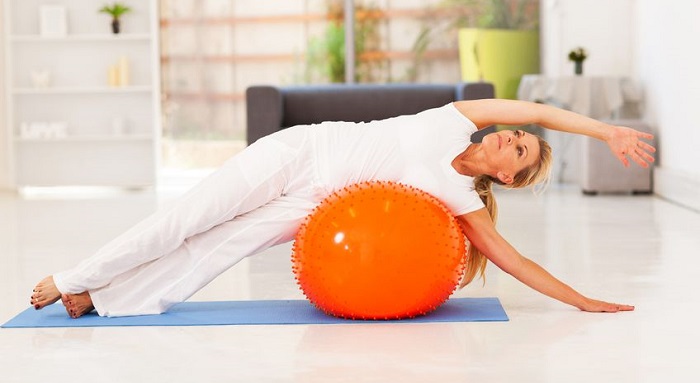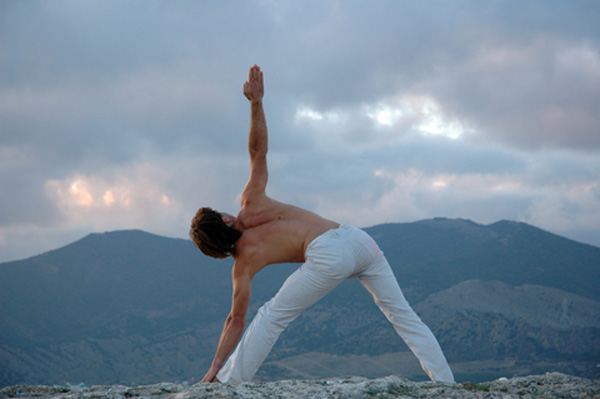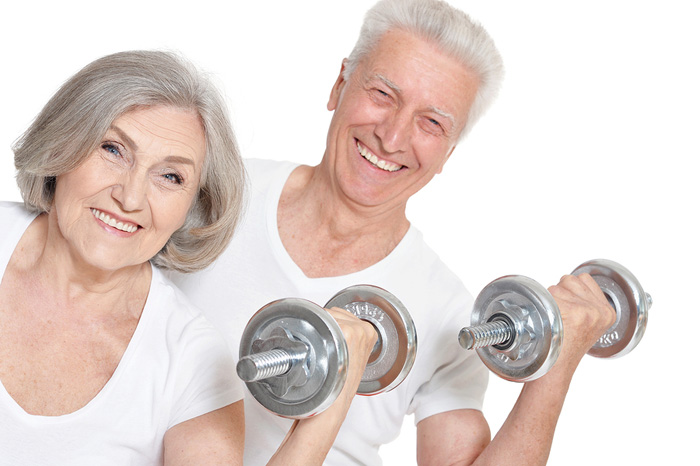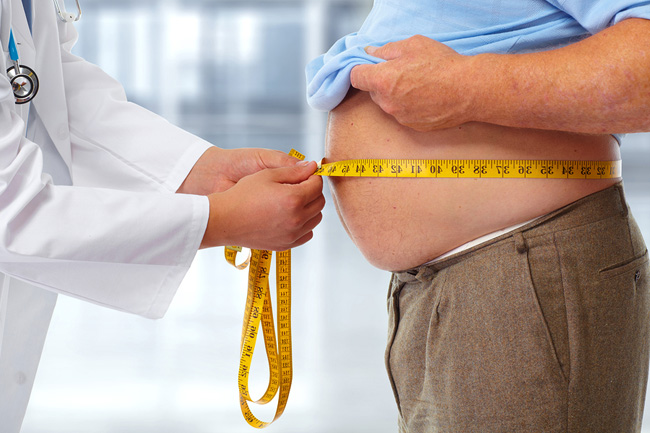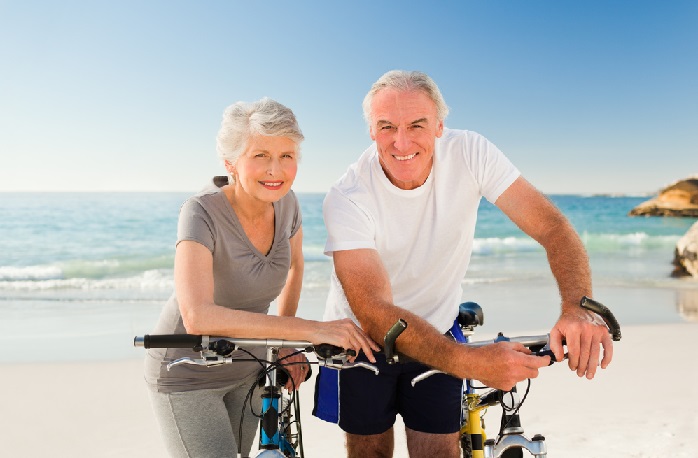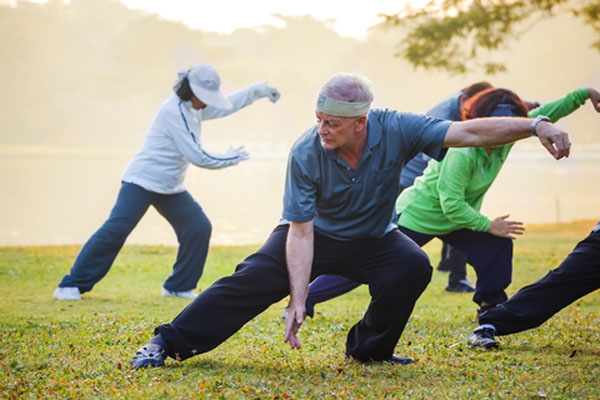Balance and Coordination
-- skill-related components of fitness
Balance and coordination are two of the components of physical fitness that deteriorate as the predictable consequences of inactivity with aging. The good news is that changes in balance and coordination can be slowed, halted, or reversed.
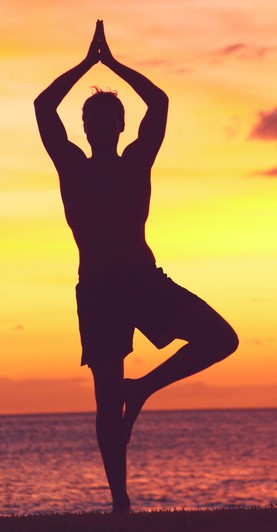 Yoga Tree Pose to improve balance
Yoga Tree Pose to improve balanceDefine Balance
Balance is the ability to hold a body position in either a stationary or moving situation. It is necessary for many things we take for granted, such as standing, walking up and down stairs, sitting, reaching, and lifting.
Falling is a tremendous concern as we get older. Studies show that one out of every three
Americans over 65-years of age falls each year.
Falls account for 87% of all fractures, and are the second leading cause of spinal cord and brain injuries among those between 65-84 years of age.
Ways To Improve Balance
It takes strong muscles to keep the spine and joints aligned properly in order to develop and maintain good posture. Both strength training and stability exercises have been shown to reduce the risk of falls and the related injuries up to 45% among men and women between the ages of 65-97 years.
The following are a few ideas to get you on the way to better balance.
- It is probably best to begin balance exercises without equipment. When you practice, be sure you are standing near something to stabilize yourself if necessary.
- There are various balance-training balls and boards available in gyms. You can also purchase them at prices ranging from approximately $10 to $100.
- Take advantage of instructional books, DVDs, and websites to help you start at home. You might check out your local recreation center for classes.
- Consider participating in activities such as bicycling, skiing, yoga, snowboarding, and Tai chi. These are great ways to maintain and improve balance.
- Practice good postural alignment. Your mother was right for all those years, reminding you to sit and stand up straight. Changes in alignment impact balance, as well as other bodily systems. Thanks mom!
Exercise Tip
When performing any exercise, always hold your abs in tight. It's a great habit to develop. Don't make the common mistake of pushing your stomach outward when exercising.
Tighten up those abs, as if you were pressing your belly button toward your spine.
Strong abs are part of the sidewalls that provide stability to improve performance and prevent injury during all physical activities.
What is Coordination?
Coordination is the ability to use different parts of the body together smoothly and efficiently.
Ever notice older people dancing who aren’t keeping up with the rhythm like they used to? Maybe you are one of those people right now.
Rhythm is something we tend to lose as we get older; but, why is that?
Loss of rhythm is a decline in coordination and reaction time. The loss of these capacities is the result of Sarcopenia, which is a lack of muscle mass and coordination as the result of aging or inactivity.
Motor neurons in the brain are responsible for movements. Therefore, increasing the number of neural connections can slow, stop, or reverse this decline.
Strength training, in particular, increases the number of neural connections that impact reaction time, resulting in better balance and coordination.
More therapists and physicians have started to recommend strength training as the first step in addressing the issue of Sarcopenia. Typically, after strength training for 2 to 3 months, other forms of exercise are incorporated.
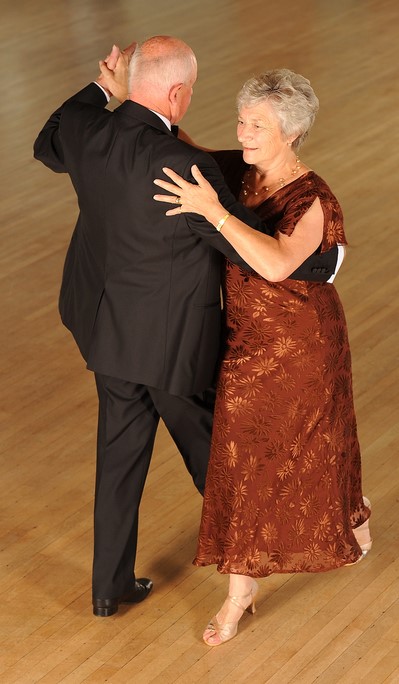 Put on those dancing shoes!
Put on those dancing shoes!Almost any sport that requires integrated body movement will improve coordination. Skiing, tennis, badminton, dancing, and Zumba-like classes are all excellent activities that require coordination and rhythm.
Simple coordination exercises can be like child's play. Try bouncing a tennis ball against a wall and catching it with one hand, or skipping and swinging your arms as you do.
Balance and Coordination -- don't relegate these skills to the good-old days!
Good balance and coordination enables you to play with your children and grandchildren, or walk on uneven surfaces without stumbling.
You can reclaim balance and coordination by reacquainting yourself with an activity you once loved, or venturing into something new.
For example, I am amazed how many seniors have taken up snowboarding. I know of a woman who started roller derby at the age of 60!
It's never too late for new experiences, not to mention the fact that it is good for your brain to learn new things.
Celebrate how much of a gift it is to unleash your potential, because there's a world of opportunity out there just waiting for you to join in.
More Topics That May Interest You
Some of the advertisers on my website are affiliate partners, which means that I may receive a small commission from any sale, at no extra cost to you.
For example, the Amazon affiliate advertising program is designed to provide a means for sites to earn fees by advertising and linking to amazon.com.
Your tips and purchases help to support this free-information website.
Thank you.
The content of this website is for informational purposes only and not intended to be taken as a replacement for professional medical advice, care, diagnosis or treatment by a doctor, dietitian, physical therapist, nutritionist or fitness instructor.
DO NOT BEGIN ANY EXERCISE PROGRAM WITHOUT CHECKING WITH YOUR DOCTOR FOR UNDERLYING CONDITIONS THAT MAY PREVENT YOU FROM DOING SO.


